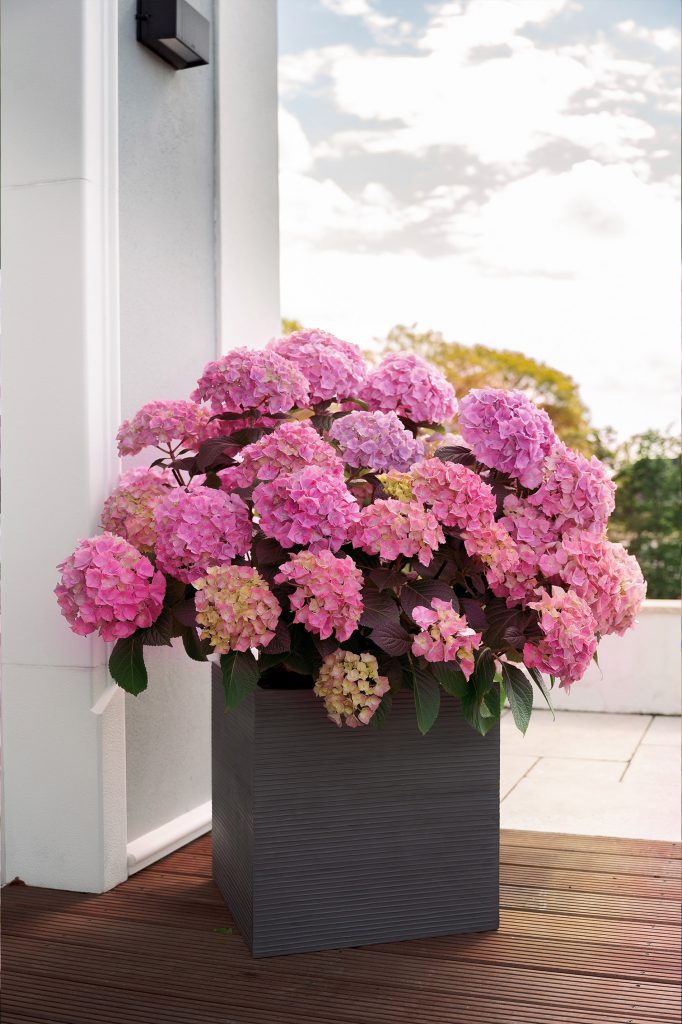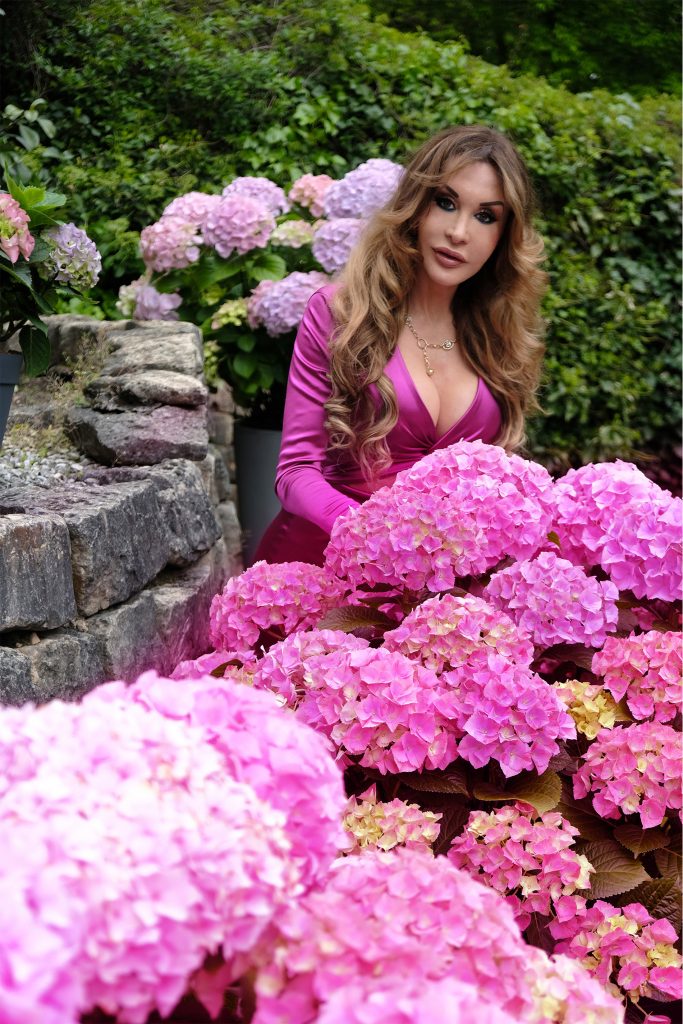

Story
“This hydrangea is my flower love.”
At first glance, it was clear that this beauty had to become my ‘Dolly Buster’ hydrangea.
The beautiful, huge blooms shine in my garden, like a star on the red carpet. Tirelessly, my hydrangea blooms in vibrant colors. It is my very own private sea of blossoms, which I love to dive into again and again.
Whether in the garden, in the planter or in the vase, the huge flowers always look like freshly styled.

Dolly Buster®
~ my flower love~
Huge flower balls
& bright colors.
Bombastische Blüten
~ all summer long
Everywhere charming.
Where to plant
The ´Dolly Buster´ Hydrangea is the star in my garden!
The ´Dolly Buster´is simply everywhere charming: Even in bad weather conditions the plant looks freshly styled. Suitable as a flowering shrub in the garden bed, as a flowering hedge and in a planter on the patio and balcony. In entrance and entryway areas, ´Dolly Buster´ adds style & flair. The giant flowers can be used as a stylish decoration in the vase.

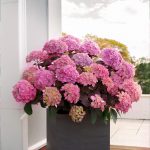
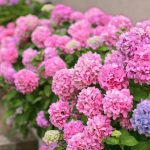
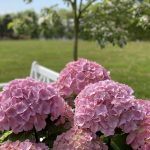
Spectacular new.
About the plant
Huge flowers Bright colors Sturdy shoots
Beautiful shape Easy to care Winter hardy & cut tolerant
Botanical name: Hydrangea macrophylla ‘Dolly Buster
Growth: vigorous and compact, 1.5 m tall and wide.
Flowers: The flower balls are on very sturdy, strong shoots that do not bend over even in rain.
Huge flower balls up to 35 cm in diameter with enormous impact.
Flower color: Depending on the soil reaction (PH value), the flower colors vary from light pink to bright pink to bluish.
In fading until autumn the flowers are green-purple colored.
Flowering time: Flowering on one year old wood, July to October.
How to plant & care
Pflegetipps – so blüht ´Dolly Buster´® den ganzen Sommer
Soil and flower color:
The flowers change color depending on the garden soil. If the soil pH is higher, they bloom pink, and if the soil pH is low, they bloom blue. For blue flowers, the soil pH usually needs to be around 5. The more “acidic” the soil, the more aluminum ions the plant can absorb for blue flower coloration. To support the blue coloration use the special hydrangea soil available in specialized stores.
Alternatively, Hydrangeas can be watered with rainwater once a week during flower development. Add to the water three grams of aluminum sulfate (alum), available in pharmacies, per liter of water. Combination preparations containing fertilizer as well as alum are available at garden supply stores.
Care:
Hydrangeas need lots of nutrients, such as through hydrangea or rhododendron fertilizer. Fertilize hydrangeas from late April to late June.
Watering:
“Hydrangea” means “the water-loving one.”
Adequate water is important for hydrangeas to thrive. In drought and sunny conditions, water daily.
Pruning:
The Dolly Buster Hydrangea sets its flower buds as early as fall. Therefore, in early spring, cut off only the frostbitten shoots and the old inflorescences. Beyond that, you can still thin the shrubs out a bit if needed.
Location:
Partial shade.
Plant in the garden soil:
1. Water dry root ball well, immerse completely in water for a short time if necessary.
2. Dig a planting hole about twice the size of the plant’s root ball. Loosen solid garden soil to make it easier for the plant to grow. Add some soil or peat or potting soil to the loosened planting hole.
3. Pull off pot. Roughen root ball to loosen roots slightly and re-stimulate growth.
4. Planting. Fill planting hole with soil, avoiding voids, and press/tread down firmly. If necessary, then cover the soil with mulch.
5. Water plant well. In dry weather, water regularly even after planting.
Plants in containers:
1. Water dry root balls well, possibly submerging completely in water for a short time.
2. Choose a sufficiently large container with holes in the bottom of the container so that too much rain and watering water can run off. The more space the container offers, the better the plant will grow.
3. Lay a layer of clay shards, lecate, gravel or similar at the bottom of the container for drainage.
4. Fill the container with suitable soil from a specialized store.
5. Remove the pot. Roughen the root ball to loosen the roots and stimulate growth.
6. Planting. Fill planting hole with soil, avoiding voids and pressing firmly.
7. Water plant well. In dry conditions, water often and vigorously.


